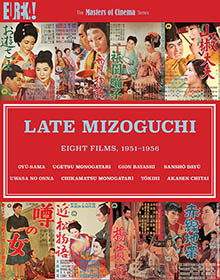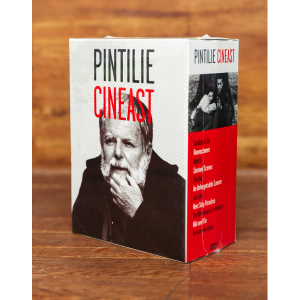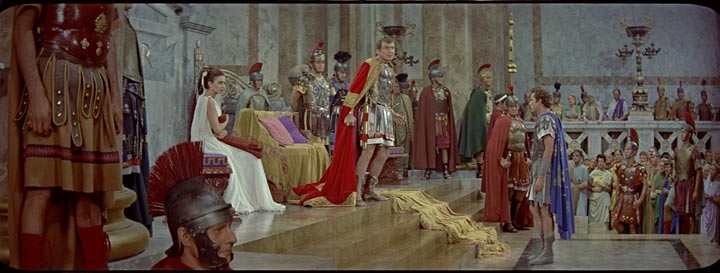DOUGLAS SIRK COLLECTION (ALL I DESIRE, THERE’S ALWAYS TOMORROW & INTERLUDE), German DVD box set.

My favorite Sirk film, SCHLUSSAKKORD (FINAL ACCORD, 1936), has yet to come out on DVD anywhere, but this attractively put together German box set of three digitally restored 50s Hollywood features, purchased via German Amazon, does include the similarly titled DER LETZTE AKKORD (INTERLUDE, 1956), which turns out to be the only stinker in the bunch, despite the fact that it’s in color and CinemaScope. (Even a diehard fan like Fassbinder admitted this kitschy item is “a hard film to get into”.) The other two -– both excellent, complexly nuanced, doom-ridden and hard-as-nails melodramas in black and white -– are the pictures Sirk made with Barbara Stanwyck, in 1953 and 1955 respectively, each of which charts her character’s belated and troubled small-town homecoming. In the first, set around the turn of the century, she’s a not-very-successful stage actress returning to visit her family in Wisconsin; in the second she’s a divorced and successful clothes designer looking up her one-time boyfriend (Fred MacMurray), who now has a family of his own (including a somewhat miscast Joan Bennett). Both are about as bleak as movies can get -– notwithstanding ALL I DESIRE’s studio-imposed happy ending, which is impossible to believe in anyway. Read more
From Cinema Scope issue issue 60, Fall 2014. — J.R.
DVD AWARDS 2014
XI edition (Il Cinema Ritrovato, Bologna)
Jurors: Lorenzo Codelli, Alexander Horwath, Mark McElhatten, Paolo Mereghetti and Jonathan Rosenbaum, chaired by Peter von Bagh
BEST SPECIAL FEATURES ON BLU-RAY:

Late Mizoguchi – Eight Films, 1951-1956 (Eureka Entertainment). The publication of eight indisputable masterpieces in stellar transfers on Blu-ray is a cause for celebration. If Eureka is not exclusive in offering these individual titles, what makes this collection especially praiseworthy and indispensable is the scholarship, imagination and care that went into the accompanying 344-page booklet. Over 60 rare production stills are included, many featuring Mizoguchi at work. Striking essays by Keiko I. McDonald, Mark Le Fanu, and Nakagawa Masako are anthologized along with extensively annotated translations of some of the key sources of Japanese literature that inspired some of Mizoguchi’s late films. The volume closes with tributes to the great director written by Tarkovsky, Rivette, Godard, Straub, Angelopoulos, Shinoda, and others. Tony Rayns provides spoken essays and some full-length commentaries.
BEST SPECIAL FEATURES ON DVD:

Pintilie, Cineast (Transilvania Films). An impeccable collection devoted to eleven films by an important and neglected maverick Romanian filmmaker, masterful and acerbic, with invaluable contextualizing extras concerning his life, work, and career drawn from ten separate sources. Read more
This is a very short and very early article by Roland Barthes, one of his “Mythologies” that remains uncollected in English, that I translated in 1982, originally so it could be run with an article of mine, “Barthes & Film: 12 Suggestions,” that I published in Sight and Sound — although it wound up not appearing there due to a lack of space. (I did, however, use some extracts from it in an article I did for the same magazine two years later about Gentlemen Prefer Blondes; both of these articles are reprinted in my first collection, Placing Movies: The Practice of Film Criticism.) Many years later, in 1999, James Morrison asked me if he could post it on the Internet, and you can still access it, along with an essay of his about it, here. — J.R.

-
- If, for lack of the proper technical background, I can’t define Henri Chrétien’s [anamorphic] process, at least I can judge its effects. They are, in my opinion, surprising. The broadening of the image to the dimensions of binocular vision should fatally transform the internal sensibility of the filmgoer. In what respect? The stretched-out frontality becomes almost circular; in other words, the ideal space of the great dramaturgies.
Read more




